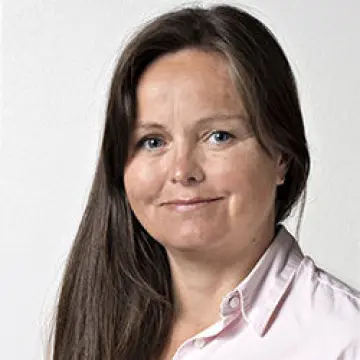THIS CONTENT IS BROUGHT TO YOU BY Nofima The Norwegian Institute of Food, Fisheries and Aquaculture Research - read more
This could make it easier to produce safe and juicy fish cakes
Each fish cake must be treated all the way to the core without damaging the product.

At Lerøy Seafood's factory, they produce 160,000 fish cakes per shift. During peak season, they run two shifts.
Each cake must have the correct temperature to be safe to eat. The core temperature must be at least 72°C to kill potentially dangerous bacteria. But if it gets too high, the fish cakes lose flavour and become too dry.
Balancing food safety and taste
This can be a challenging balance in large-scale production. To be on the safe side, producers often choose to maintain a higher temperature than necessary.
There is currently no commercially available method to continuously measure and control the core temperature in fish cakes.
Researchers from Nofima and SINTEF Digital are now testing a new method. It is based on near-infrared (NIR) spectroscopy. The hope is that it can provide better control and more consistent quality.
“With continuous measurements, we can see over time how the core temperature varies throughout the day, week, and month. We can use the findings to optimise the process so that the core temperature becomes more stable. This will give us fish cakes with more consistent quality,” says Steffen Andersen at Lerøy.
From trials to the factory
The development of the new measurement method started in Nofima's Meat Pilot Plant. Here, meat specialist Tom Johannessen made fish cakes using Lerøy's recipe. These were cooked at different temperatures and times to achieve various core temperatures.
Then the researchers measured the core temperature with both a traditional insertion thermometer and the NIR sensor.
“We compared the NIR measurements with traditional thermometer measurements and found a very good correlation. The promising results made it natural for us to proceed with larger-scale testing at the Lerøy factory,” says Jens Petter Wold, senior scientist at Nofima and head of SFI DigiFoods.
Must measure in the right place
The NIR sensor was mounted on the production line in the factory, above the conveyor belt where the fish cakes come out of the oven. It can measure the temperature in each fish cake that passes.
The special thing about this NIR technology is that it can measure right to the core of the product.
To get accurate measurements, it is important to measure in the right place.
The temperature of a single fish cake coming out of the oven can vary greatly. The temperature at the edges can be 8-10 degrees higher than in the middle, so it is important to measure in the centre of the cakes, where the temperature is lowest.
Reducing waste and saving energy
Today, operators regularly insert thermometers into samples of fish cakes. This is not only time-consuming, but it also destroys the products being measured.
With the new technology, Lerøy can continuously monitor the temperature without wasting a single fish cake.
There can also be waste if the core temperature of the fish cakes does not reach 72°C.
“If the temperature is too low, and we discover it quickly, we can heat them up again. But if the fish cakes have already been sent for cooling, it's too late, and then there's waste,” says Steffen Andersen at Lerøy.
The future of food production
The project shows how new technology can improve traditional food production.
The same principles used for fish cakes can also be applied to other foods such as burgers and steaklets. A limitation here is that the products cannot be too thick, as there are limits to how deep you can measure with NIR.
“Using this type of technology is not just about making production more efficient. It's also about producing safer food with better quality and less waste,” says Jens Petter Wold.

This content is paid for and presented by Nofima The Norwegian Institute of Food, Fisheries and Aquaculture Research
This content is created by Nofima's communication staff, who use this platform to communicate science and share results from research with the public. Nofima is one of more than 80 owners of ScienceNorway.no. Read more here.
More content from Nofima:
-
Red algae grown in wastewater from fish-farming facilities could become sustainable salmon feed
-
Pumpkins are good for more than just Halloween decorations
-
This is how temperature affects a salmon's health and growth
-
Study: Omega-3 and zinc is a powerful duo for salmon
-
Fish may turn yellow if frozen too fresh
-
Is it better if food is packaged in plastic or paperboard?





































